
Up until a few years ago, I used to think of bare-root planting as an advanced gardening skill. Something that I felt slightly intimidated by. Surely a skill that I would have to level up to.
Yes, it sounds ridiculous now. Even to me. Especially considering that buying baby plants in nursery plastic pots is a relatively recent development that we now take for granted. Before this, barely a few decades ago, planting bare roots was the norm.
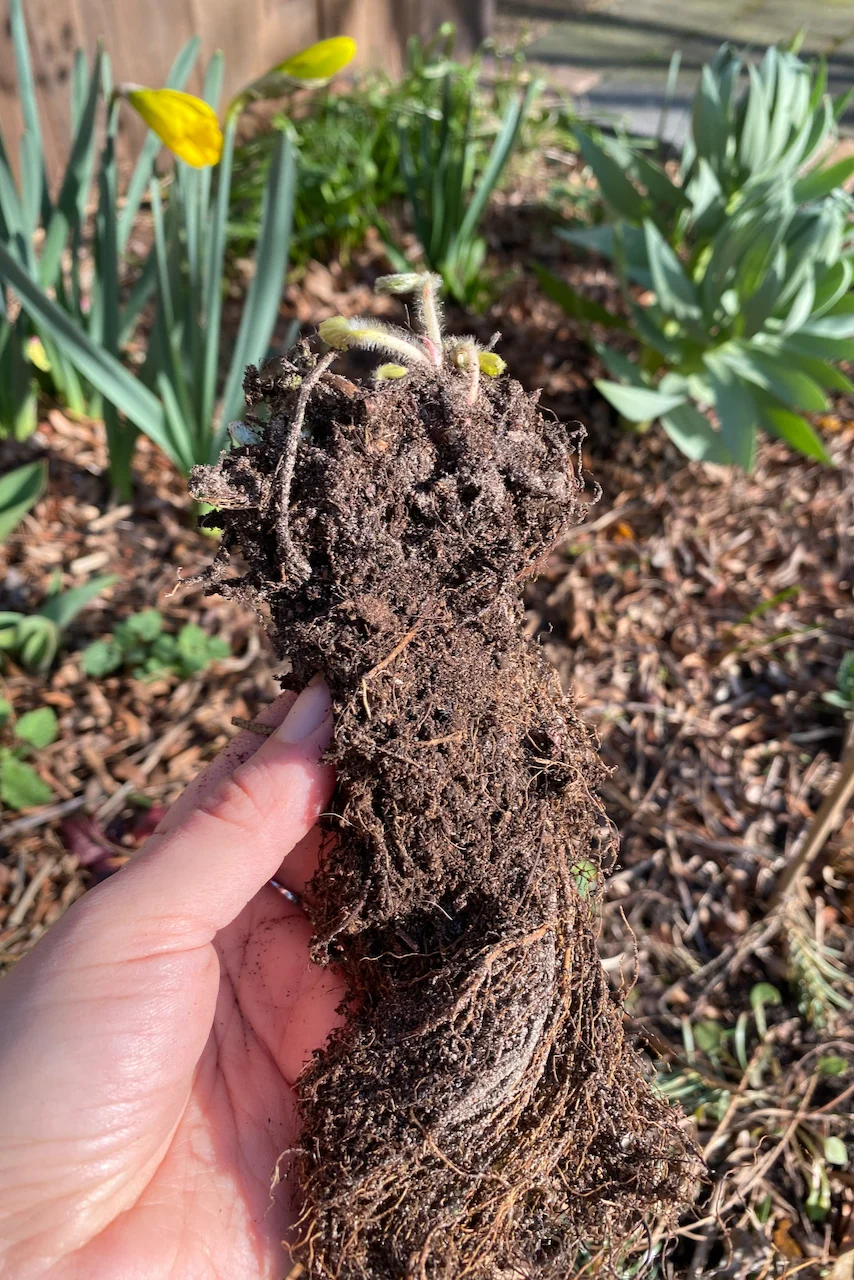
Now that I know what I’m doing, I’m on a mission to convince our readers to give this method a try too. And one of the easiest ways to get started this spring is by planting bare-root strawberries. There’s not a lot that could go wrong. And you get strawberries!
Why should I bother with planting bare-root strawberries?
Money, that’s why!
Buying bare-root plants is so much more affordable than buying starter plants. The seller doesn’t have to use disposable plastic pots, soil and extra storage space. Then you don’t have to pay for shipping all this stuff when you buy your bare-root plants.
In addition to budget considerations, I’m planting bare-root strawberries this spring because I’m buying organic strawberries. It was easier for me to find certified organic bare roots than it was to find certified organic starter plants. (By the way, the variety I’m planting is called Fragaria ananassa ‘Pendula.’)
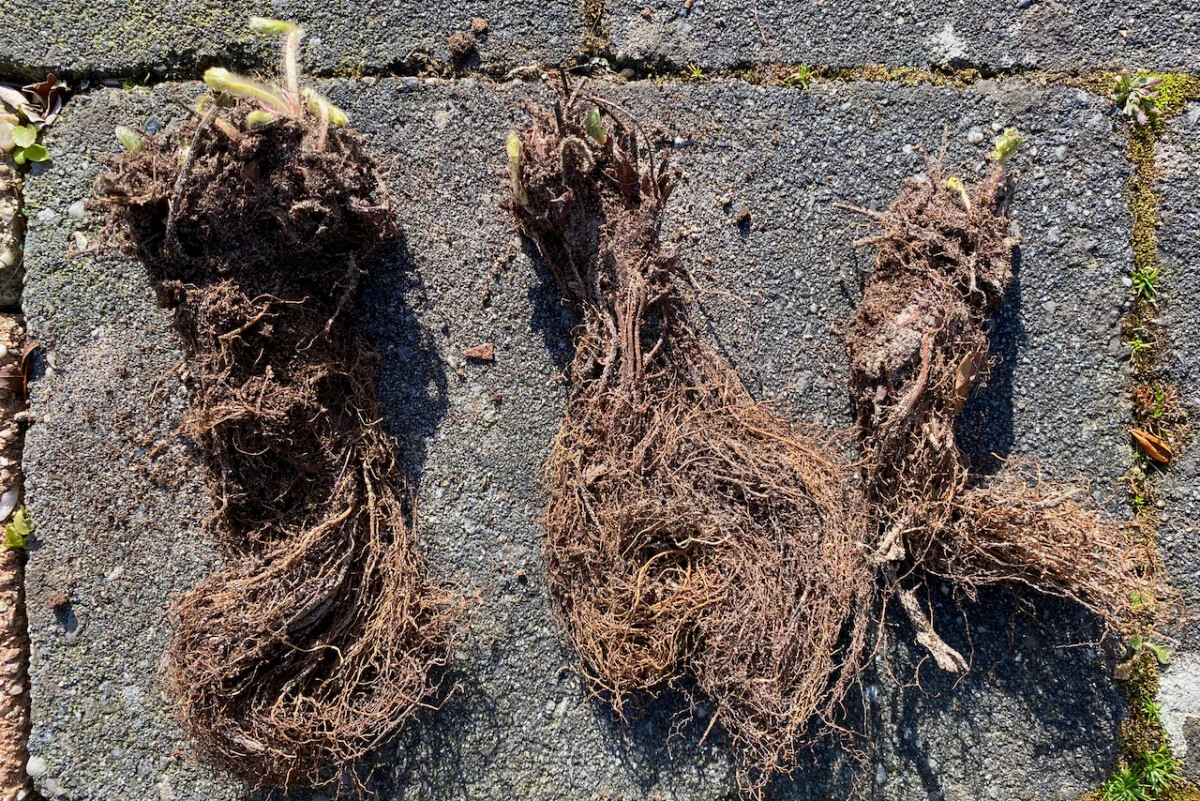
Also, keep in mind that bare-root plants are already mature plants.
So I’m cutting out some of the extra time the plant needs to grow from a baby to a fruit-bearing mature plant. I planted bare-root strawberries last spring too, and they fruited the same year, so I know it works. This year, I’m just adding to the patch.
Since the bare roots of strawberries are still dormant, they don’t experience transplant shock.
They’ll basically wake up from their slumber and start growing in situ straight away.
Equally important in choosing bare roots is the fact that I’m planting everbearing strawberries. These strawberries don’t send runners like June-bearing strawberries do, so I find it harder to find them for sale as starter plants.
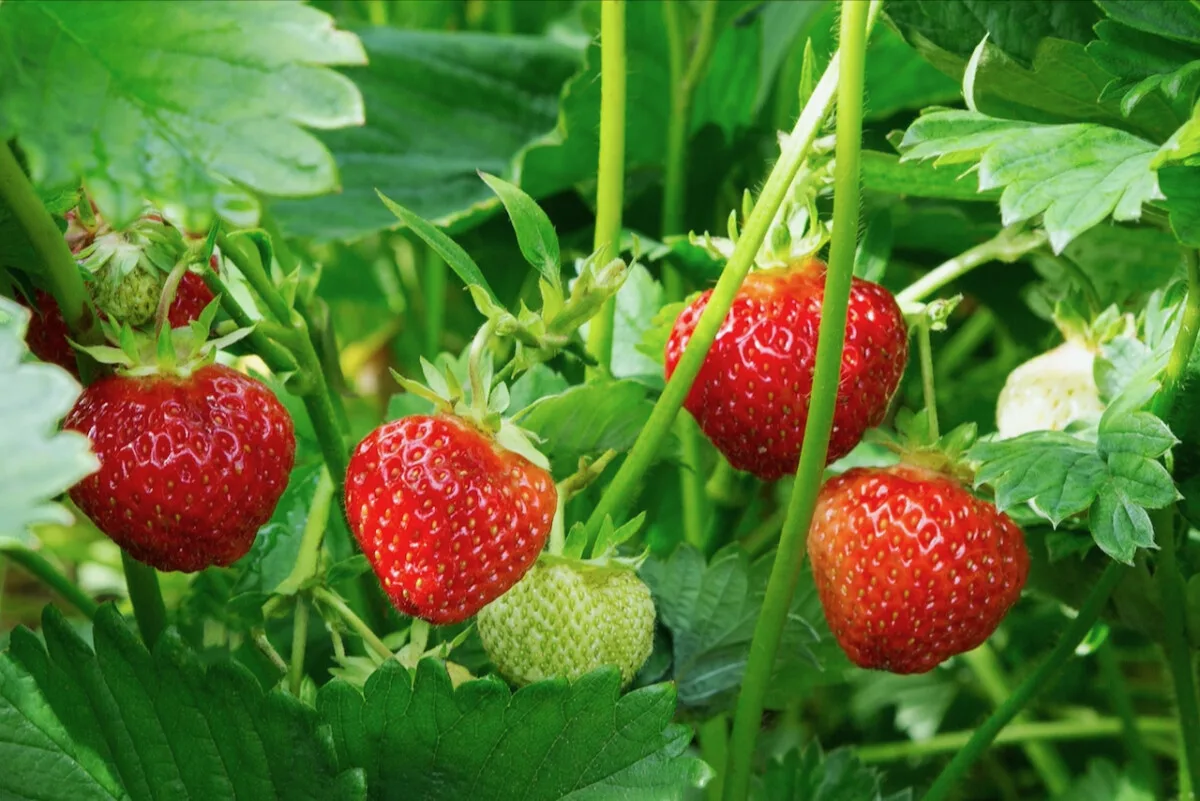
But let me clarify that you can definitely start June-bearing strawberries from bare roots as well.
If you’re curious, here are a few other reasons to buy bare-root perennials and shrubs. Most of these reasons also apply to strawberries.
When is the best time to plant bare-root strawberries?
As with any bare-root perennials, they’ll be available for purchase from late fall until early spring. This is also the best time to plant them. This is a pretty wide window, which is another advantage of planting bare roots.
If you’re planting the strawberries in the dead of winter, you can start them in containers first and keep them in a frost-free greenhouse.
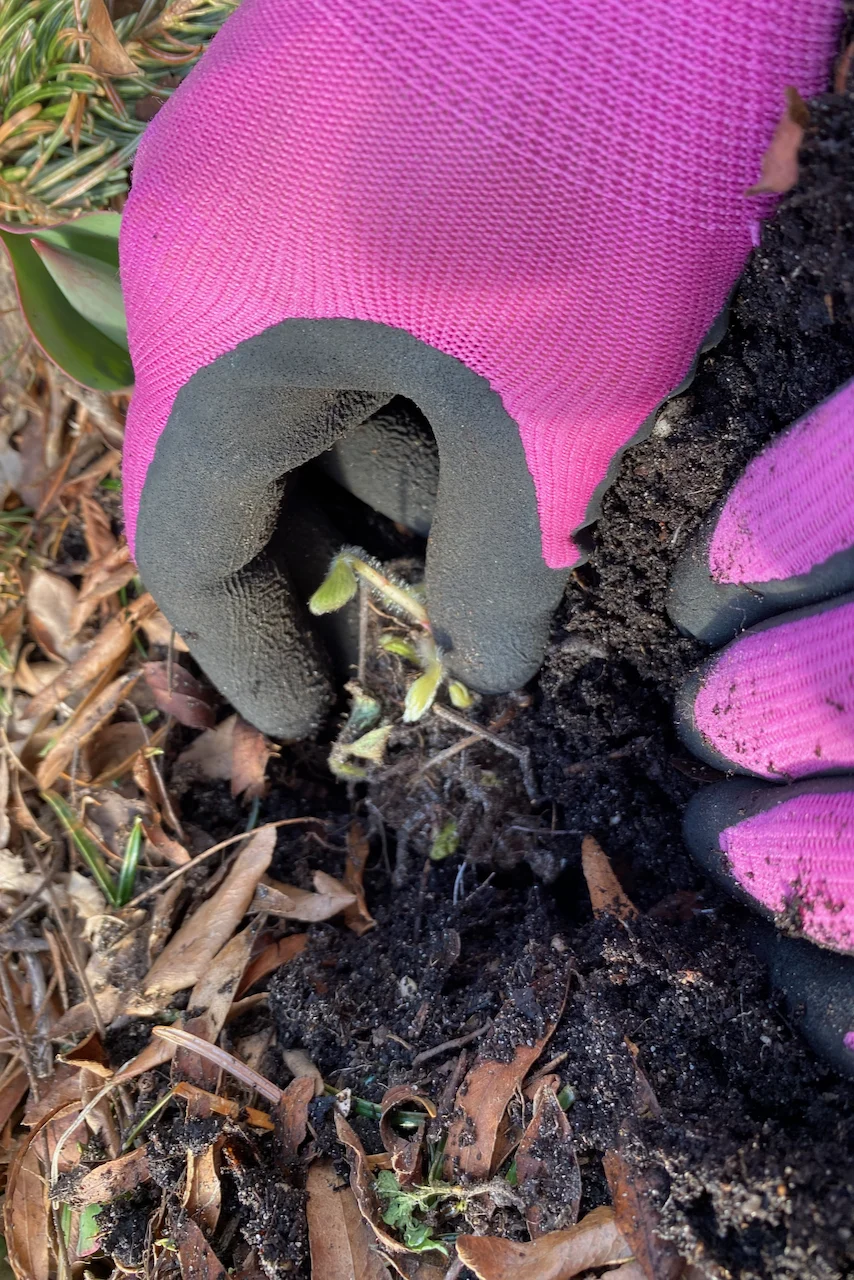
I ordered my strawberries in early February, and they shipped in early March. I’m planting them as soon as I get them because I want to avoid too much variation in temperature and humidity. It is too warm and dry in my house, and I have nowhere else to keep them. So in the ground they go in the third week of March this year.
Many online greenhouses will ship to coincide with when it’s time to plant those varieties in your hardiness zones.
On the other hand, if you decide to store bare-root strawberries until you get to planting them, my one piece of advice is this: don’t let them dry out. Root desiccation increases the likelihood of your plant dying before it gets the chance to start growing again. If you’re not ready to get them in the ground, you can store them in the fridge wrapped in a damp paper towel.
4 Tips for Planting Bare Root Strawberries
After making such a big deal out of it, I’m not going to tell you to just stick them in the ground and go on your merry way. Although that’s essentially what you’re doing, here are a few tips to set your bare-root strawberries up for success.
Tip 1: Soak the roots before planting (optional)
Before you plant bare roots, you can soak them in water for about half an hour. This will rehydrate the roots and signal to the plant that it’s time to resume growing.
I think this is mandatory if you’re planting thick and sturdy bare roots (such as shrubs), but I don’t always bother with strawberry roots.
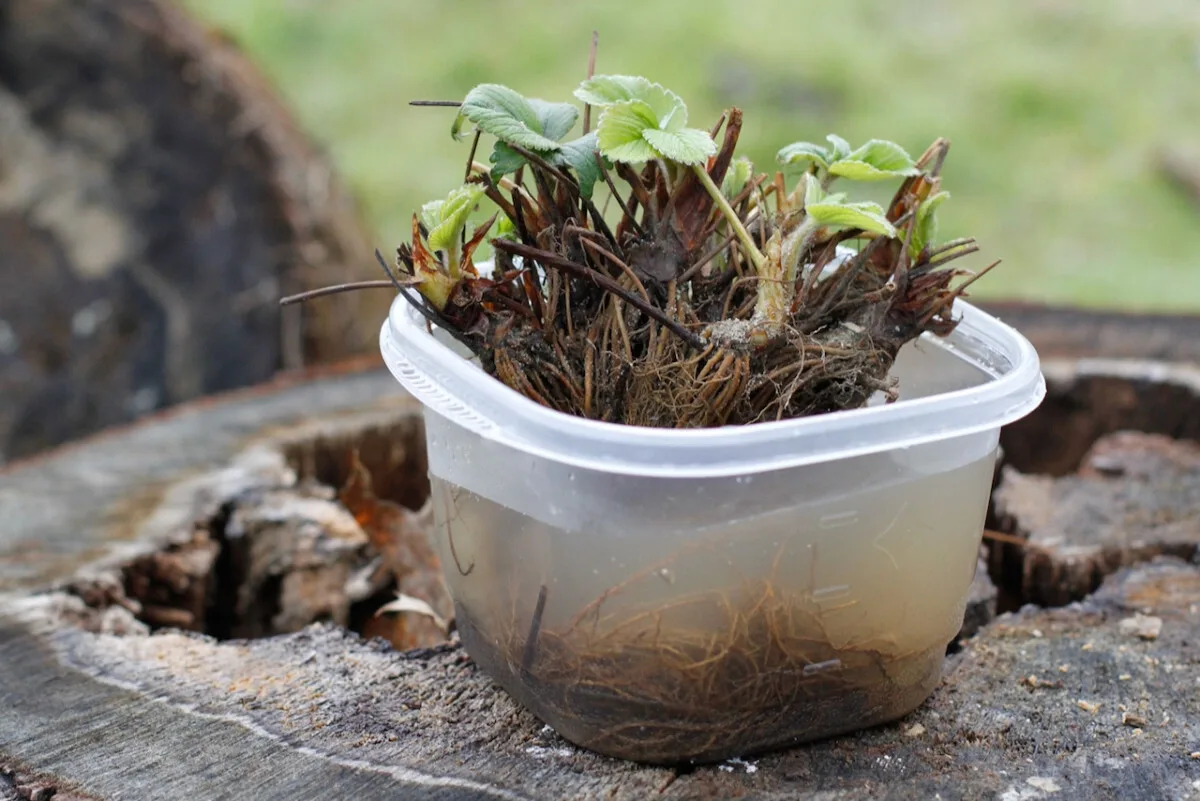
This year, I skipped the soaking step for two reasons:
Number one: it looked like the bare roots had been properly hydrated by the seller before shipping. The delivery bag, despite being perforated, had traces of condensation on it.
Number two: it had been raining for weeks before I planted my strawberries, so the soil was already saturated.
If you’re having a dry spring, or if the roots look crumbly and dry, go ahead and soak them. Similarly, if you’ve been storing the strawberry roots for a long time, soaking them is a good first step.
Tip 2: Match the depth of the hole to the length of the roots.
When we dig holes for planting the bare-root strawberries, it’s important not to dig too deeply. We should walk the fine line between not leaving the roots exposed above ground while at the same time not burying the crown.
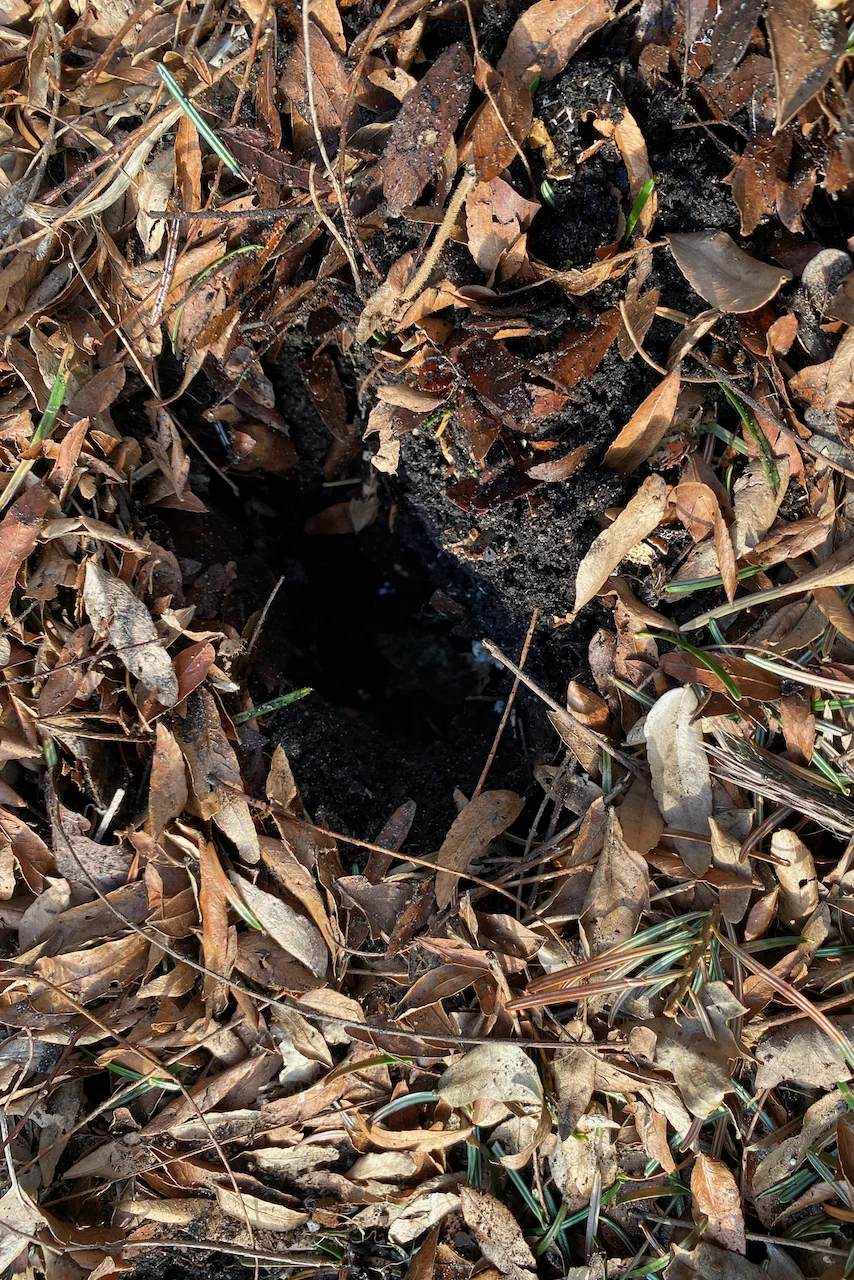
I think the most common mistake I make here is digging a planting hole that’s too deep. Then we end up with the crown underground. Strawberry roots are very malleable, so just spread them around before you put them in the ground. Do your best to have most of the roots pointing down. They’ll find their way.
Tip 3: Never ever bury the crown.
I can’t overemphasize this seemingly small detail. The crown is the base of the plant, where all the new growth will originate from. It feels like a little rounded protuberance right above the roots. You don’t want that to be underground or be surrounded by mounded, damp soil.
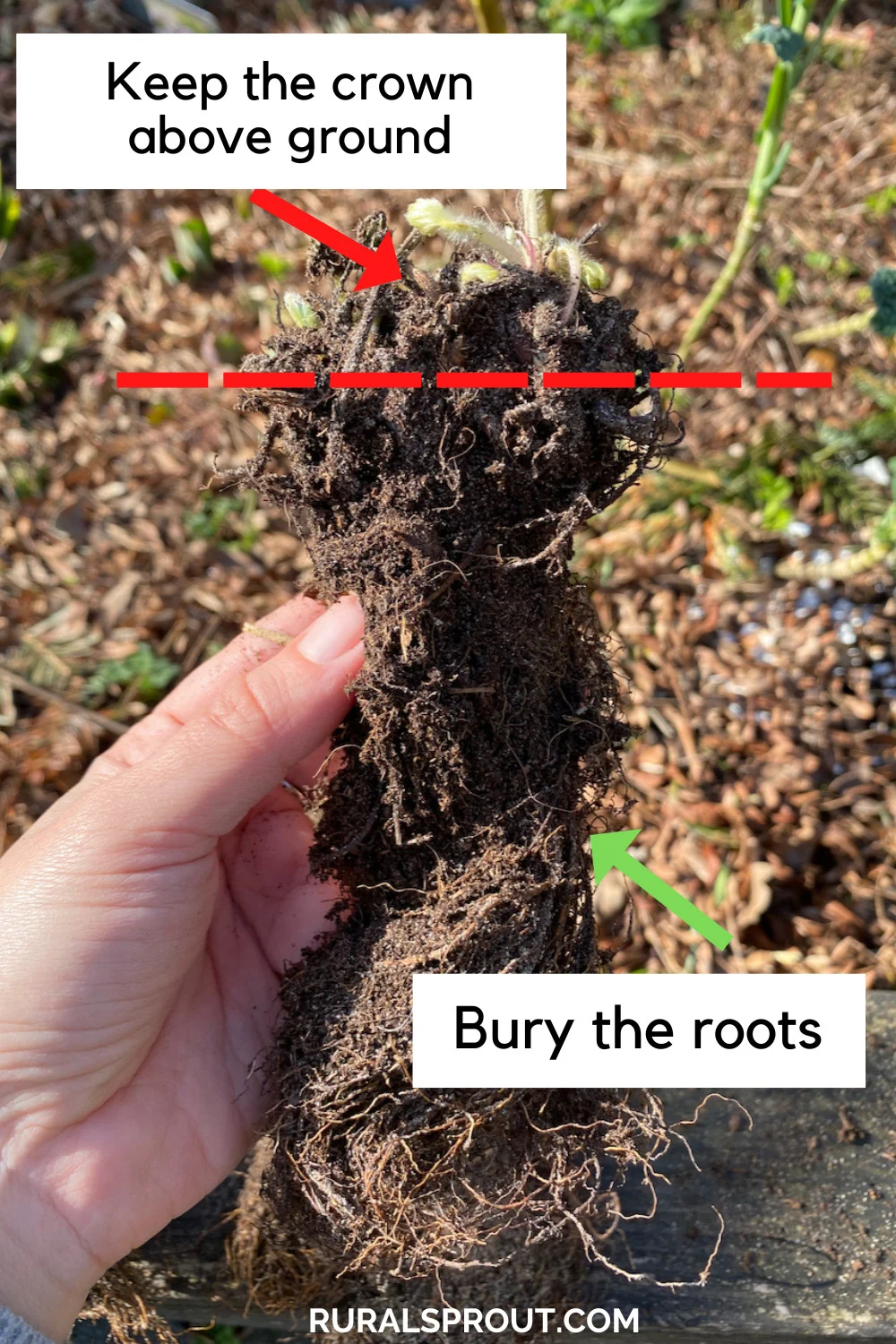
This will lead to crown rot, which is one of the most common causes of death for strawberry plants.
The bottom of the crown needs to stay just above ground level. If the crown looks like it’s been buried too deeply once you fill the soil back, you can give it a little tug to pull it back up.
Tip 4: Keep the bare roots watered.
We should end every planting spree – whether it’s bare roots, starter plants, seeds or bulbs – with a thorough watering session.
But when it comes to fruit-bearing plants, it’s even more important to keep them properly hydrated throughout the growing season. And this starts at planting time when strawberries are getting established. Water helps feed the plant and jumpstarts the growing process.
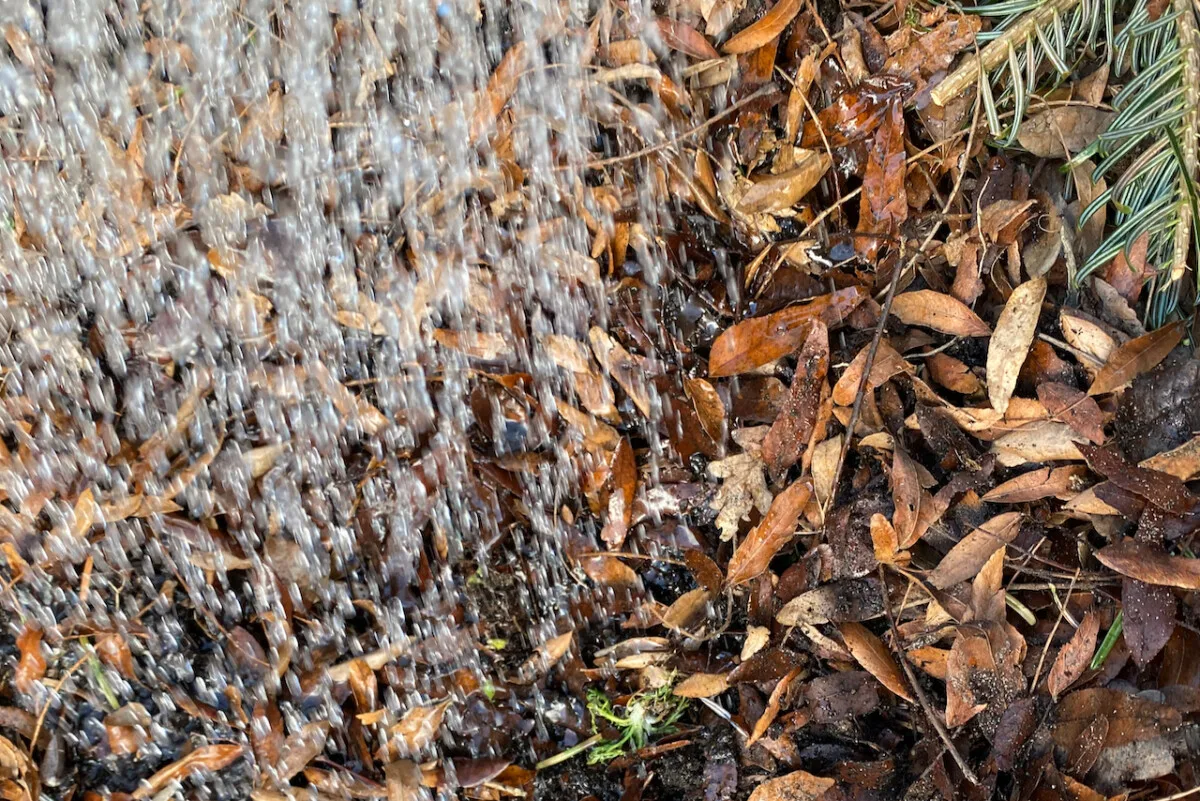
Speaking of feeding, I avoid feeding the bare roots as soon as I’ve put them in the ground. Give them a chance to start growing first. The wrong feeding will promote foliage growth, and right now, we’re focusing on getting the roots established.
How long will it take to go from bare root to fruit for strawberries?
That depends on the type of strawberry, how much sun and water it’s getting, and how good you are at delaying gratification. The packaging of these strawberry bare roots stated that it takes sixty to eighty days from planting to fruiting.
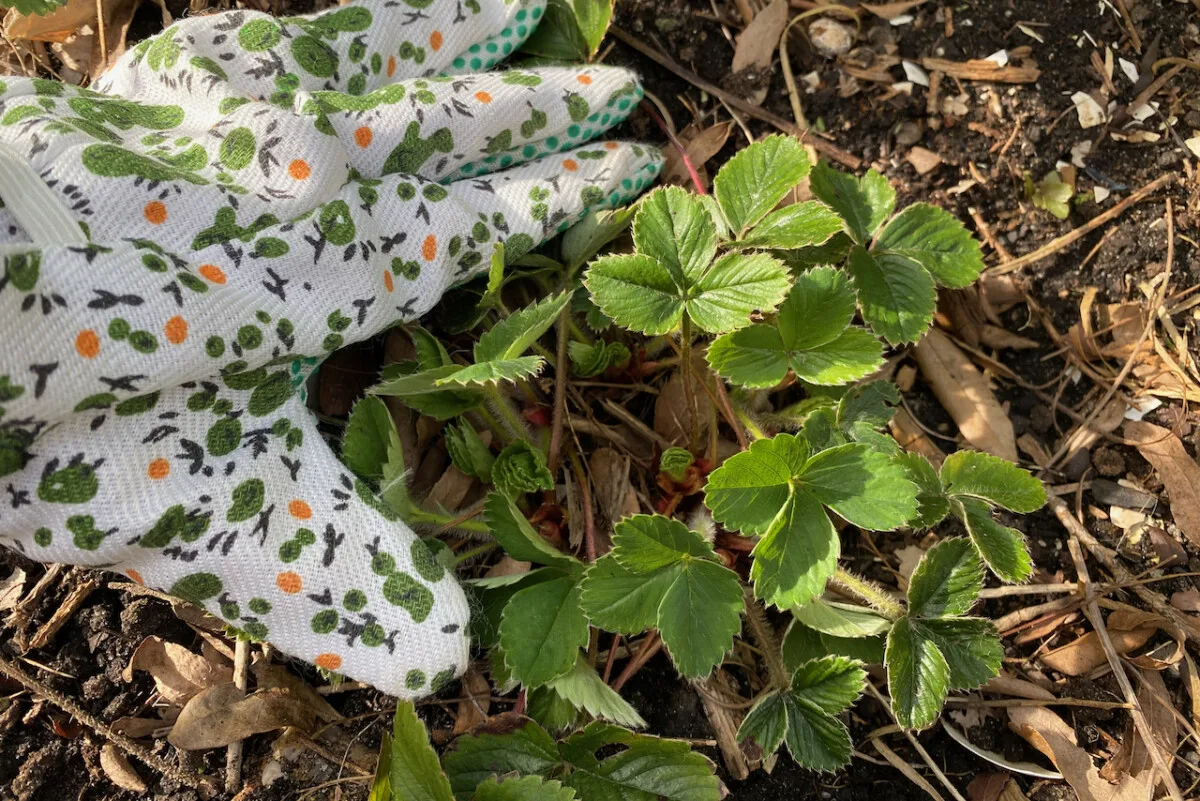
But since they’re everbearing strawberries, the first crop will be quite modest. Everbearing strawberries start slow in early to mid-summer, but continue to crop well into the fall months.
Some gardeners prefer to skip the first year of fruiting. They pinch the flowers of June-bearing strawberries to allow the plant to focus on getting established. For everbearing strawberries, they pinch the flowers during the early part of the growing season (May and June, sometimes even early July), for the same reasons.
I’m not as virtuous. I’m also highly impatient. And I think the plants will get established anyway without forgoing strawberries for a full year.
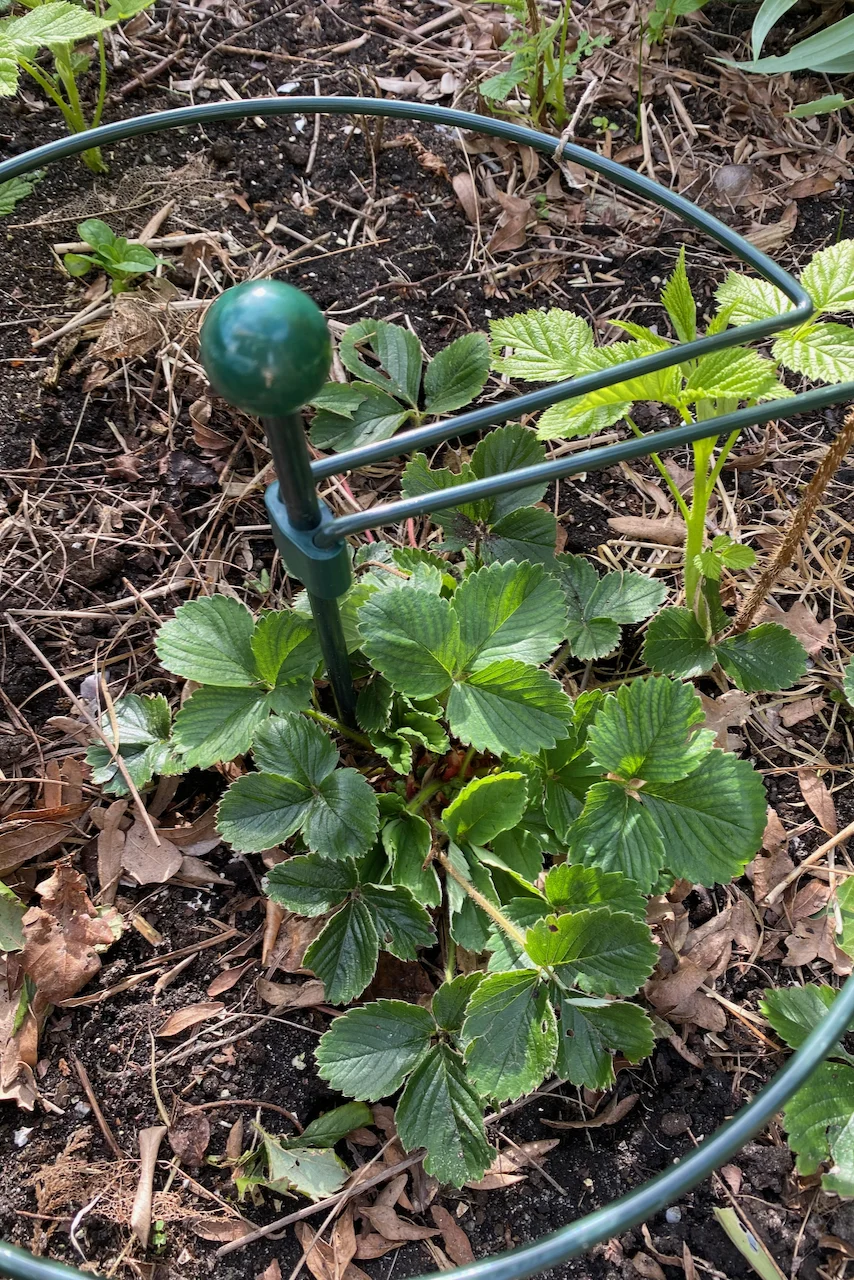
Plus, I garden in a small suburban yard and every single plant needs to earn its keep every single year. So I’m eagerly awaiting my first flavor-packed strawberry in sixty to eighty days, please! And since these everbearing strawberries have already gone through a cold spell (vernalization) as bare roots, they’re more likely to be productive fruit bearers.
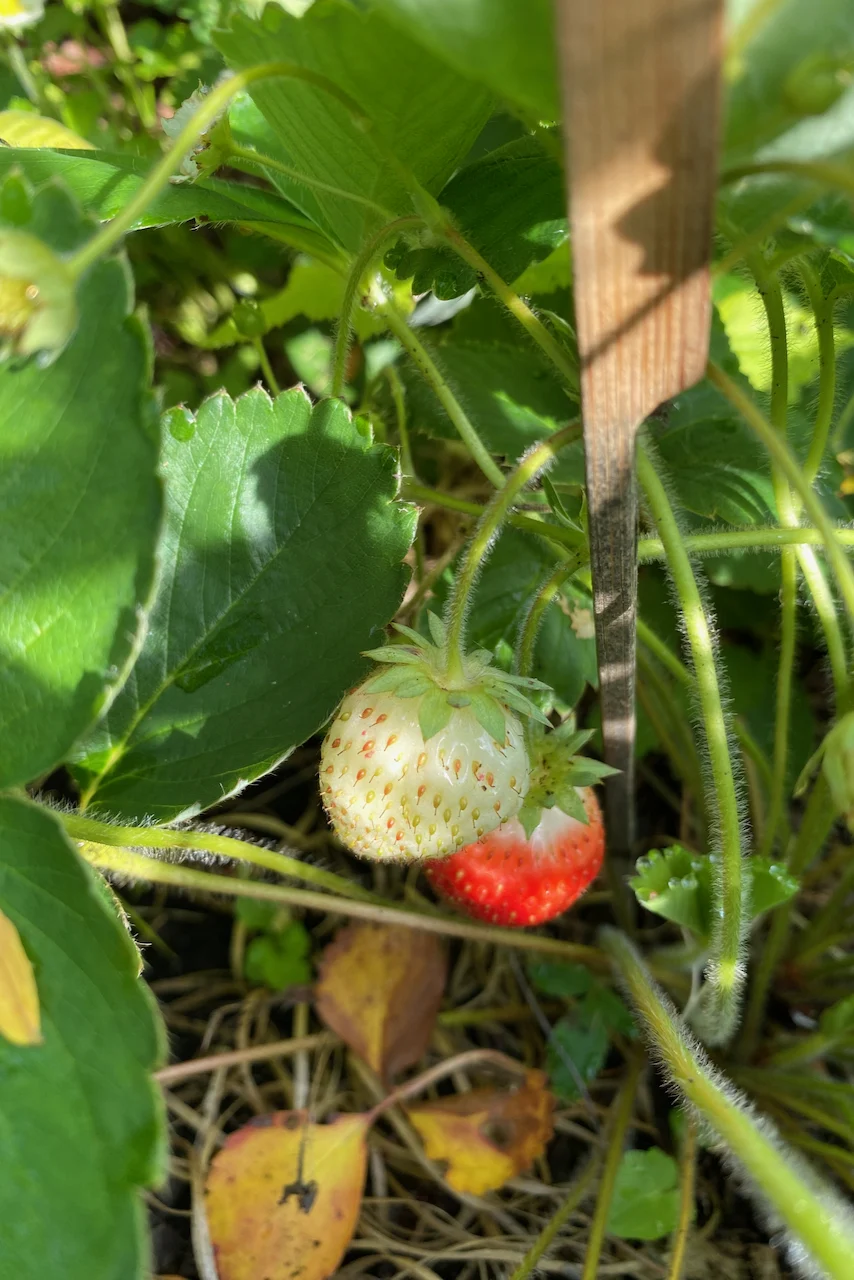
Are bare-root strawberries suitable for containers?
Yes, they are. You can follow the same steps when you start your bare-root plants in pots. In fact, my colleague, Meredith, has a great tutorial on how to make a strawberry growing station that’s super easy to keep properly watered.
Where do we go from here?
It would be beyond the scope of this planting guide to include a thorough strawberry care guide. But I don’t have to. My colleagues have all the tips covered.
Check out this article in which Tracey teaches us some secrets to get massive strawberry harvests every year.
Then have a look at this article from Elizabeth on how to grow strawberries in small spaces, including some super practical vertical gardening ideas.

Get the famous Rural Sprout newsletter delivered to your inbox.
Including Sunday ramblings from our editor, Tracey, as well as “What’s Up Wednesday” our roundup of what’s in season and new article updates and alerts.


